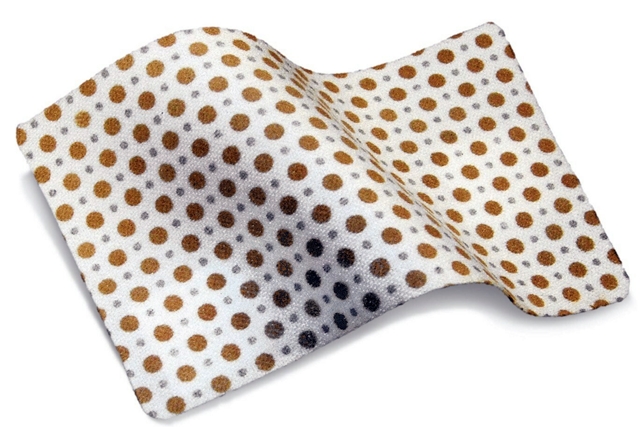15 Mar. 2023. Findings from a clinical trial show a dressing for burns with an electric current prevents formation of bacterial films, reducing risks of infections. Results of the trial, conducted by U.S. Army clinicians and researchers at University of Indiana, assessing a technology developed by Vomaris Innovations Inc., appear in the 28 Feb. issue of the journal Advances in Wound Care.
Vomaris Innovations in Tempe, Arizona developed the V.Dox technology as an electronic alternative to treat wounds and burns that run a risk of infection. One cause of infections in these cases are communities of bacteria that use electro-chemical signaling to form into a polymeric film-like matrix called a biofilm that resists immune system responses and treatment by conventional antibiotics, adding to the already growing problem of multi-drug resistance. In an earlier article, the authors cite data from Centers for Disease Control and Prevention and National Institutes of Health showing biofilms are associated with 65 to 80 percent of infection cases.
The V.Dox technology is built into a dressing for burns with a polyester fabric base laced with silver and zinc nanoscale particles, connected to tiny batteries that emit weak electrical signals similar to bacterial signals transmitted through the dressing. Vomaris says this technology interrupts electro-chemical signals used to form and build biofilms, allowing for antibiotics and the body’s immune system to work more effectively. And the company says its tests so far show the electronic-aided dressings are effective against a broad range of microbes, including those considered resistant to conventional antibiotics alone. Vomaris’s Procellera dressing, made with V.Dox technology, has been cleared for sale in the U.S. by FDA since 2016.
Little or no evidence of biofilms
The clinical trial enrolled 38 participants being treated for burns at Brooke Army Medical Center in San Antonio, Texas. Participants were randomly assigned to receive standard silver nylon dressings and topical silver-based ointments for wounds and burns after cleaning and removal of damaged tissue, or the standard of care plus a Vomaris Procellera dressing. The study team looked primarily for the presence of biofilm and rate of biofilm eradication, based on scanning electron microscope analysis of skin biopsies after seven days. An independent group led by Sashwati Roy, surgery professor at Indiana University in Indianapolis, analyzed blinded samples from the biopsies. The team also measured incidence of infection, wound closure, quality of healing, bacterial load, and adverse events for up to 30 days following treatment.
Results show after seven days more trial participants (72%) receiving an electronic dressing plus the standard of care with reduced biofilm severity than the 48 percent receiving the standard of care alone. About half (52%) of participants receiving the electronic dressing show little or no biofilm evidence in their burns after seven days. In addition, two bacterial species considered particularly dangerous for infections — Ralstonia pickettii and Serratia marcescent — were reduced in more recipients of electronic dressings, 64 to 80 percent, than standard of care alone. And the authors report no adverse effects from the electronic dressing were found.
The authors conclude that early care of burns with electronic dressings like those from Vomaris decrease biofilm severity. “We believe this is the first randomized clinical study of any wound care technology,” says Rodney Chan, plastic surgeon at Brooke Army Medical Center and first author of the paper in a Vomaris Innovations statement, “to show reduction in biofilm severity and overall infection in burn wounds. The bioelectric dressing technology is an important new tool for addressing the significant challenge of biofilm infection.”
More from Science & Enterprise:
- mRNA Aerosol Delivered to Lungs to Treat Pneumonia
- Home Infectious Disease Diagnostic Begins Clinical Tests
- Clinical Trial Underway Testing Influenza Vaccine Patch
- Autism Device Company Gains Venture Funds, Joins Incubator
- Light-Activated Treatment Kills Covid-19 Nasal Viruses
We designed Science & Enterprise for busy readers including investors, researchers, entrepreneurs, and students. Except for a narrow cookies and privacy strip for first-time visitors, we have no pop-ups blocking the entire page, nor distracting animated GIF graphics. If you want to subscribe for daily email alerts, you can do that here, or find the link in the upper left-hand corner of the desktop page. The site is free, with no paywall. But, of course, donations are gratefully accepted.
* * *


 RSS - Posts
RSS - Posts
[…] Trial Shows Electronic Dressing Stops Biofilm Infections in Burns […]